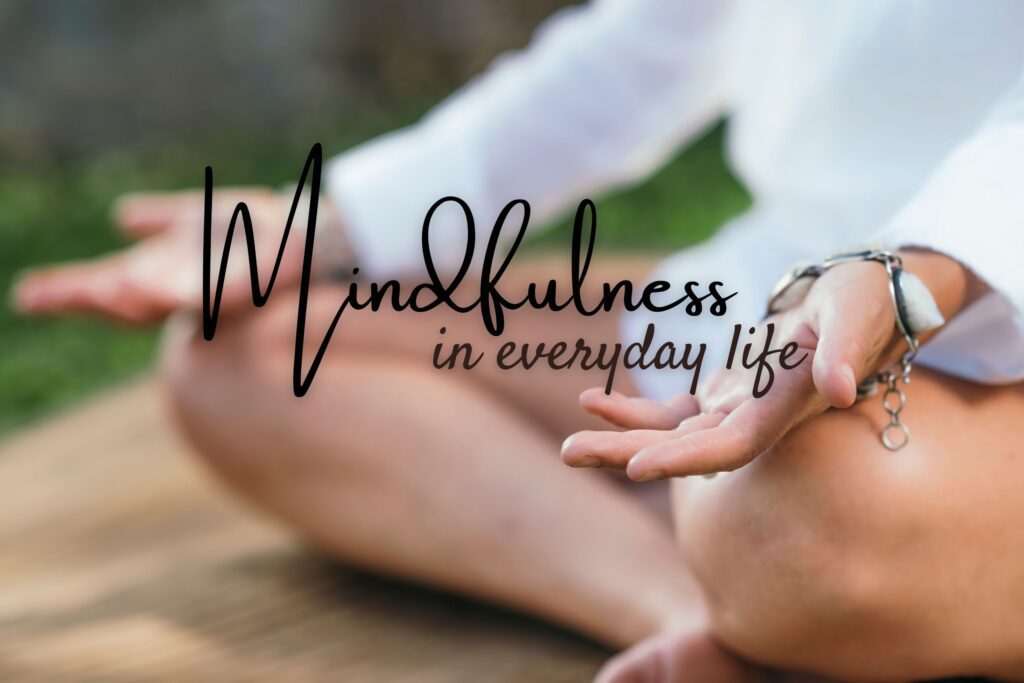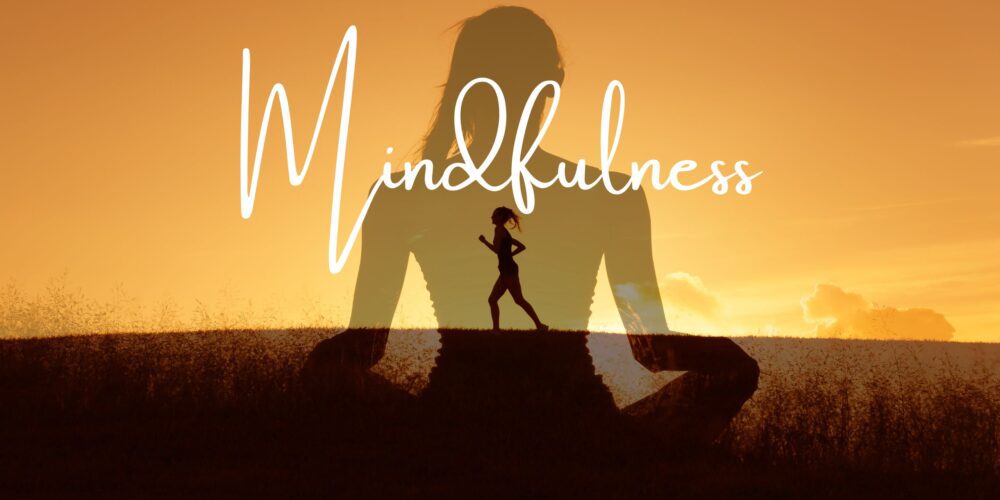We both have work-from-home jobs, although we have to go to the office once a week but it’s flexible and we consider ourselves fortunate enough to have such jobs. It has its pros and cons, but that’s a whole other conversation.
Thanks to the nature of our work, we can set up shop anywhere as long as there’s Wi-Fi and some peace and quiet.
Last week, we visited our friends who live in the quaint city of Porbandar, situated in the western Indian state of Gujarat.
Their home is 10 minutes away from the shoreline, blessed with a stretch of coastline dotted with serene beaches.
After wrapping up our 9-to-5 routines, we’d make a beeline for a nearby beach every other day to relax and be among nature as both of us are nature lovers.
Since this city isn’t a tourist hotspot, sometimes we would have the entire beach to ourselves. We would just sit there quietly, feel the cool breeze on our skin, hear the sound of the sea, and watch the sun set behind the horizon.
Those 30-45 minutes became the highlight of our day. The time we spent on the beach was so peaceful and relaxing that we would look forward to going there next time.
We live in Delhi NCR which is a metro area, and life here is very fast-paced and hectic. As the alarm goes off in the morning, we start composing our to-do list for the day while rushing through our morning routine.
Although we have a mindful morning routine, the general pace of life is very fast. And there, we got a taste of slow-living. We were completely present in those 30 minutes, savoring every second as if time itself had slowed down just for us.
But if we had spent those 30 minutes thinking about what this person said the other day, or what task we left in between that we need to work on tomorrow, or any other XYZ thought, we would not have enjoyed that time the way we did.
We realized that mindfulness has a way of infusing every moment with joy and fulfillment.
You would have probably experienced it too, that sense of contentment and happiness when you’re on vacation.
Of course, the landscape is beautiful but the real magic happens when you’re not thinking about the worries of the past and future, and enjoy the current moment.
That’s the essence of mindfulness, it empowers you to find beauty and joy in the ordinary moments of life.
You might not have access to a beautiful scenic landscape every time, but life in general is beautiful and when you pause and observe, each moment becomes beautiful.

Welcome back to the fourth blog of our mindfulness series where we’re discussing all about mindfulness. In the previous blog, we discussed how meditation can help you practice mindfulness.
In this blog, we’ll explore how to incorporate mindfulness into various aspects of your daily life.
Because if you can do it sitting quietly with your eyes closed, you can also do it while you’re having your meal, folding your laundry, doing your job, going out shopping, or talking to a friend or a stranger.
Let’s dive right in!
Table of Contents
What Is Mindfulness
Mindfulness is the practice of directing all your focus and attention to the current moment without being judgmental or distracted by the thoughts and worries of the past or future.
It sounds like a very simple practice but it might be a little challenging at first to keep yourself from being distracted by past and future thoughts. We encourage you to read our first blog of the mindfulness series which is all about what is mindfulness and why it is a superpower.
Now, let’s talk about how to practice mindfulness in your daily life.
Mindfulness At Work
In whichever industry or sector you’re employed in, chances are that it has a very fast-paced environment where deadlines loom large, your inbox is flooded with emails, your calendar is filled with meetings, and your entire day is very demanding.
In the middle of all this chaos, you can cultivate a sense of calm, clarity, and focus through mindfulness. Let’s talk about this in detail.
Stay Present in a Busy Workplace
The basic principle of mindfulness is to anchor your awareness to the present moment regardless of the external circumstances.
In your workplace, it is about being aware of your thoughts, emotions, and bodily sensations as you go about your daily tasks and interactions.
The simplest and most powerful technique to stay present in the moment is through mindful breathing. Throughout your day, take intentional pauses and bring your attention to your breath.
Feel the sensation of the air coming in and going out of your body. Feel the rise and fall of your chest.
No matter how stressful your day is, when you practice mindful breathing a few times a day, you will find a sense of calm amidst the chaos.
Incorporate Mindful Breaks
On days when there’s too much workload, Pooja has a very bad habit of sitting non-stop for 8-10 hours straight till the work is finished.
Sitting for long hours or working non-stop is so harmful for both physical and mental health and we’re trying to come out of this negative habit.
Even when your workdays are not too hectic, take intentional breaks throughout the day. Don’t just keep sitting at your desk.
Take a walk around the office, have a cup of tea or coffee, or simply appreciate the view from your balcony. If you’re working from home, go to the kitchen for water or some healthy snacks, or go to your balcony to be among your plants.
If possible, do a quick meditation for 5-10 minutes or some simple stretching exercises. These practices will help you alleviate stress, reduce tension in the body, and promote a sense of well-being.
Mindful Communication
Another key aspect of mindfulness at work is cultivating mindful communication. This involves being fully present and attentive during conversations, meetings, and interactions with your colleagues.
Instead of rushing through conversations or thinking about what you’ll say next, practice active listening.
Focus your attention on the speaker, maintain eye contact, and nod to show that you’re engaged and attentive. Allow space for the speaker to express themselves fully, without interrupting or jumping to conclusions.
Mindfulness in Relationships
In our lives, relationships tie together our experiences, emotions, and sense of belonging.
Whether it’s with our partners, family members, friends, or colleagues, the quality of our relationships impacts our well-being and happiness. And being mindful in every relationship only makes it deeper.
Improving Connections Through Mindfulness
Mindfulness in relationships is about more than just being physically present, it’s about showing up fully and authentically for the people you care about.
It’s about listening with an open heart, speaking with intention, and cultivating empathy and understanding in your interactions.
One of the most powerful ways to improve your connections through mindfulness is through mindful listening.
Instead of simply waiting for your turn to speak or formulating your response while the other person is talking, mindfulness invites you to truly listen, with your full attention and presence.
This means putting aside distractions, such as your phones or inner chatter, and tuning in to the speaker’s words, tone, and body language.
By being fully present this way, you signal to the other person that they are valued and respected, which fosters a deeper trust and intimacy in the relationship.
Cultivating Presence in Conversations
In addition to mindful listening, mindfulness in relationships is about being present in your conversations and interactions.
This means being fully engaged and attuned to the other person, not just physically but emotionally and energetically as well.
It means making eye contact, nodding in understanding, and offering words of affirmation or support when needed.
It means being sensitive to the other person’s needs and feelings, even when they’re not explicitly stated, and responding with compassion and empathy.
Communication Tips for Mindful Relationships
Effective communication is the cornerstone of every healthy relationship and mindfulness is a very powerful tool in this sense.
Mindful communication is about speaking with intention, clarity, and kindness while also being empathetic about the other person’s feelings.
One key aspect of mindful communication is practicing non-reactivity. Instead of being swept away by your emotions triggered by the other person’s words or actions, mindfulness encourages you to pause, breathe, and respond thoughtfully rather than reactively.
This doesn’t mean you have to suppress your emotions or pretend that everything is fine when it’s not, it means acknowledging your feelings without allowing them to dictate your behavior and choosing your words and actions with a sense of clarity and compassion.
Nurturing Empathy and Understanding
Another important aspect of mindfulness in relationships is about being empathetic and understanding towards others. It is about stepping into the other person’s shoes and seeing the world through their eyes.
It’s about understanding and acknowledging their emotions and perspectives with compassion and curiosity.
By being empathetic, you create a space for deeper connection and mutual support in your relationships even when you’re in disagreement or conflict.
Mindfulness in Self-Care
If the concept of self-care is new to you, then we encourage you to read our blog series where we’ve discussed all about what is self-care, mental self-care, physical self-care, and emotional self-care.
The first image or thought that comes to mind when we talk about self-care is that it is about pampering ourselves, but in reality, it is about nourishing your mind, body, and soul so that you can ensure your overall well-being.
Mindfulness in self-care means being present and attuned to your needs, feelings, and experiences.
Mindful Stress Awareness And Management
The world we live in today is very fast-paced and hectic, and stress has become an unavoidable part of our lives. The first step towards managing stress is through awareness, and mindfulness offers you a way to do that.
It encourages you to tune into your body’s signals and recognize when you’re feeling stressed or overwhelmed.
When you become aware of these signs and signals and pay attention to your body, you can take proactive steps to address your stress before it spirals out of control.
Since mindfulness is about taking a pause and focusing on the present moment, you become an observer of your mind and body which allows you to identify your stressors.
Once you’ve identified these stressors, mindfulness enables you to respond to these stressors with a greater sense of clarity and resilience, instead of reacting impulsively or getting caught up in negative thought patterns.
Mindful Responses to Stress
Mindfulness offers you a variety of tools for mindfully responding to your stress.
This might involve practicing deep breathing exercises to calm the nervous system, doing gentle movement or stretching to release physical tension, or simply taking a moment to sit quietly and reconnect with yourself.
On top of these formal practices, you can also incorporate mindfulness into your everyday activities and self-care routines. You can take a mindful walk in nature, savor a cup of tea, or indulge in one of your favorite hobbies.
These moments of presence and intention can help to soothe your exhausted nerves and give you a sense of balance and well-being.
Mindful Eating
Mindful eating is about bringing your full attention to the experience of the food you’re eating. It’s about enjoying each bite and paying attention to your body’s hunger and fullness cues.
Instead of mindlessly gulping down your food while scrolling social media or watching TV, slow down and savor the flavors and textures of your food. Pay attention to how it makes you feel and accordingly make conscious decisions.
Mindful Bathing
Similarly, mindful bathing is about immersing fully in the sensory experience of bathing. Feel the water against your skin, notice the scent of the soap, and allow yourself to relax and rewind.
Instead of rushing through your shower as just another item on your to-do list, you can turn it into a sacred ritual of self-care and renewal.
Mindful Bedtime Routine
Incorporate mindfulness into your bedtime routine for better sleep and overall well-being.
Good quality sleep is one of the most important aspects of our overall well-being so you should make conscious efforts to get enough and good quality sleep every day.
We’ve briefly talked about how you can ensure a good night’s sleep in our blog on the evening habits of successful people. You can give it a read once you’re through with this blog.
Mindfulness In Everyday Moments
Life is made up of a series of moments, some big and momentous, others small and seemingly insignificant. Yet, it’s in these ordinary and everyday moments that we have the opportunity to experience the richness and fullness of life.
Mindfulness is about bringing awareness and presence to these moments, infusing even the most routine activities with a sense of wonder, curiosity, and gratitude.
Bringing Awareness to Routine Activities
Most of the activities we do throughout the day, like brushing our teeth, washing the dishes, taking a bath, etc. are all done on autopilot without giving much thought or attention.
But it’s these moments that offer the perfect opportunity to be present and connected.
So the next time you’re doing a routine task, try bringing awareness to your senses. Notice the sensation of the toothbrush against your teeth, the sound of the water running, and the smell of the soap.
By grounding yourself in your senses, you can anchor yourself in the present moment and cultivate a deeper sense of appreciation for the simple joys of life.
Mindful Walking and Commuting
Walking is one of the most basic human activities, yet how often do we do it mindfully?
As you walk, pay attention to the sensations in your body. Feel your feet touching the ground, the pace of your breath, and the movement of your muscles. Pay attention to the things around you, the sights, sounds, and smells.
When you walk mindfully, you turn a simple experience into a meditation in motion.
Similarly, while commuting by car, bus, train, or airplane, focus on your surroundings. Notice the color of the sky, the shape of the clouds, and the people around you.
From an experience where you’re lost in thoughts or frustrated, mindfulness offers you a way to turn it into a time of reflection and connection with the world around you.
Mindful Technology Use
Technology has become a very important part of our daily lives in today’s digital age. From smartphones to laptops to social media, we’re constantly bombarded with information and distractions.
Mindfulness invites you to use technology more intentionally and mindfully.
The next time you reach for your phone or open a web browser, pause for a moment and think, why am I using this device? Is it out of habit, boredom, or genuine need?
By bringing awareness to your technology use, you can make more conscious choices about how you engage with it. You can set boundaries around your screen time, take regular breaks to unplug and recharge and use technology as a tool for connection and productivity rather than a distraction.
Create Mindful Pauses Throughout the Day
Finally, one of the most powerful ways to cultivate mindfulness in your daily life is to create mindful pauses throughout the day.
These are moments of intentional reflection and presence, where you pause, breathe, and reconnect with yourself and the world around you.
These mindful pauses can take many forms, from taking a few deep breaths before a meeting to savoring a cup of tea in the afternoon to simply pausing for a moment to appreciate the beauty of nature outside your window.
By incorporating these mindful pauses into your daily routine, you can infuse even the busiest of days with moments of calm, clarity, and connection.
Tips for Staying Present in Daily Life
In addition to specific mindfulness practices, there are also some general tips for staying present in daily life:
1. Practice gratitude
Take a moment each day to acknowledge and appreciate the blessings in your life, no matter how big or small they are.
It could be something as simple as a warm cup of tea or coffee in the morning, the taste of your favorite dish, the comfort of sleeping in your cozy bed, or a simple talk with your loved one.
When you intentionally focus on the things you’re grateful for in your life, your focus shifts from what’s lacking in your life to what you have.
This shift in perspective will give you a sense of contentment and fulfillment in the present moment.
2. Take Regular Breaks
Throughout the day whether you are at home, office, or anywhere in the world, make time for short breaks to pause, breathe, and recenter yourself.
Whether it’s stepping outside for a breath of fresh air or simply closing your eyes and practicing a few minutes of deep breathing, these mindful pauses will help you stay grounded and refreshed amidst the busyness of daily life.
3. Practice Self-Compassion
When things don’t go as you want them to be, we tend to be hard on ourselves. You’re only human and making mistakes is a natural part of being human, so instead of beating yourself up for them, treat yourself with kindness and compassion.
Just as you would comfort or support a friend in need, extend the same level of compassion to yourself. Learn and grow from those experiences without judgment or criticism.
Wrapping Up – Practicing Mindfulness in Everyday Life
In our four-part journey through this blog series, we’ve explored how mindfulness can be integrated into various facets of daily life, from self-care routines to work, relationships, and even the most ordinary moments.
We’ve learned that mindfulness isn’t about achieving some lofty state of enlightenment or perfection, it’s about showing up fully and authentically for ourselves and others, with kindness, curiosity, and compassion.
Mindfulness is a way of being that can infuse every moment of your life with greater a sense of presence, intention, and meaning.
From the mundane tasks of daily living to the hustle and bustle of work, relationships, and technology, mindfulness offers a powerful antidote to the distractions and stressors of modern life.
As we bring this journey to a close, we encourage you to continue exploring mindfulness in your own life, experimenting with the practices and techniques shared in this series, and discovering what resonates most deeply with you.
So, as you go about your day, remember to pause, breathe, and bring your attention back to the present moment.
Whether you’re washing the dishes, having a conversation with a loved one, or simply walking down the street, there’s beauty and wonder to be found in every moment, if only we take the time to notice.
Thank you for joining us on this journey, and may your path be filled with presence, gratitude, and love. Namaste!
Previous Blogs of Mindfulness Series
What Is Mindfulness And Why Mindfulness Is A Superpower
What Is Mindful Living And How To Live Mindfully?
What Is Mindfulness Meditation And How To Do It







Leave a Reply